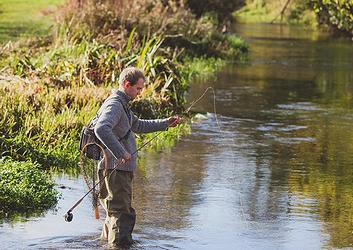
BIRMINGHAM, England, UK, July 20, 2018 (ENS) – Watercourses with high levels of fine sediment and organic materials building up in their stream beds are increasing greenhouse gas emissions from rivers, raising the risk of communicable disease and putting wildlife at risk, new research demonstrates.
Researchers from the University of Birmingham and the British Geological Survey have discovered that warming rivers can cause marked increases in carbon dioxide and methane production.

Their comparison of potential greenhouse gas emissions from UK streambed sediments shows that sensitivity to temperature varies with geology, organic matter and sediment size.
It is expected that temperature increases will be particularly important in agricultural lowland rivers and streams representing large areas of Europe, North America and Asia.
University of Birmingham co-lead researcher Sophie Comer-Warner said, “Our findings highlight the substantial risk of future greenhouse gas emissions from warming rivers, especially those which are small but have high organic matter concentrations.”
“Under future climate-warming scenarios and changes in land use leading to more organic matter ending up in warmer rivers, the emission of greenhouse gases from such watercourses could increase disproportionately relative to their size in the landscape,” said Comer-Warner.
Small rivers are known to have the highest rates of greenhouse gas emissions, with relatively large concentrations of carbon dioxide and methane found in their sediments.
There has been little previous research into the origin and changing composition of these sediments and how this impacts greenhouse gas production.
University of Birmingham co-lead author Paul Romeijn commented, “Our comparison of potential greenhouse gas emissions from UK streambed sediments revealed levels of carbon dioxide and methane that were especially raised in chalk rivers, such as the River Lambourn in the North Wessex Downs, and in sediments rich in small particles and organic matter.”
“If we are serious about reducing future emissions from rivers under climate warming, land management attention needs to focus on reducing sediment rich in organic matter content, and decreasing groundwater abstraction,” he said.
Published in the journal “Nature Communications,” their article, “Thermal sensitivity of CO2 and CH4 emissions varies with streambed sediment properties” is online at: https://www.nature.com/articles/s41467-018-04756-x
Copyright Environment News Service (ENS) 2018. All rights reserved.
© 2018, Environment News Service. All rights reserved. Content may be quoted only with proper attribution and a direct link to the original article. Full reproduction is prohibited.
